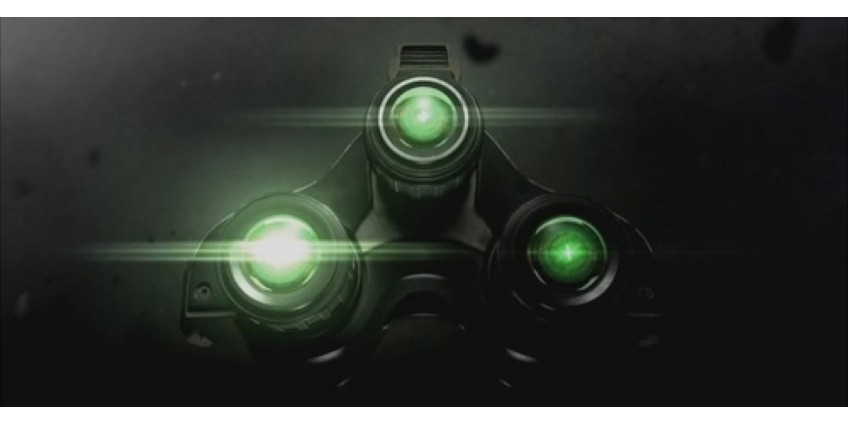
This product is not exportable outside the United States.
By adding this item to cart, you agree and acknowledge the Export Policy and confirm that you are a person in the United States with no intentions to illegally export the device.
This product is not exportable outside the United States.
By adding this item to cart, you agree and acknowledge the Export Policy and confirm that you are a person in the United States with no intentions to illegally export the device.


0

0


Our previous article talked about how deeply night vision technology has penetrated popular culture and what role it plays in movies. Cinema and video games, as the two most significant and expensive entertainment industries, not only give us a lot of positive emotions.
First of all, these are global and all-consuming industries that are an honest chronicle of civilization. They instantly absorb and sublimate all the experiences, hopes, dreams, and aspirations of humanity. These two monolithic layers of our culture are a mirror in which we can see the consequences of our achievements in perspective.
We talked about films in which night vision devices play a significant role. But, we must understand that cinema is the art of display, which does not involve any interactivity. Moreover, perhaps we will report something new: but, neither in the cinema, nor in the video, nor the photographs you will be able to see the correct display of what the operator of the night vision device sees.
All because of the peculiarities of the technology, which cannot be ideally repeated or depicted. Thus, what we see on the screen or in the cinema is a very conditional experience and does not convey the unique sensations experienced by everyone immersed in all the mysteries of the night. Video games are an entirely different matter. Of course, you won't get a completely authentic experience here either. But, thanks to the natural immersion that games provide, and thanks to the disposition in which you are a direct par-ticipant in events and control the actions of your alter ego, the level of perception is on an entirely different level. At the same time, the story and gameplay aspects give you an experience that won't be forgotten soon. That is why to-day's story about the gaming industry will be intriguing and promising.
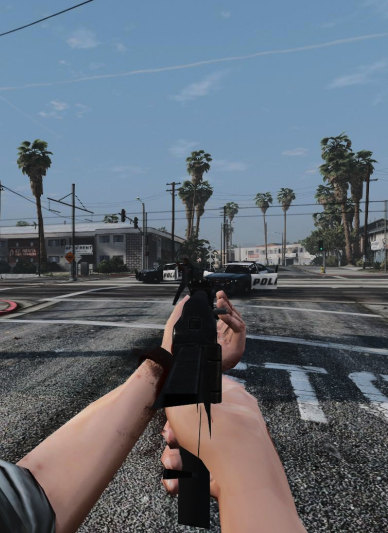
If you are reading this article, you are unlikely to be confused by complex terminology. Therefore, the designation FPS should not cause you a misunderstanding. Nevertheless, let's clarify that we are talking about First Person Shooter - a genre of video games that provides the view "from the eyes" and active gameplay.
You perceive the gameplay as if you are in the game and see what is happening with your own eyes. This genre is perhaps the most important in our story today, although we will also turn to another genre - TPS (Third Person Shooter), which differs in that you see your hero from the back but is also very important for our story.
It will not be superfluous to tell about the video game industry's history. Still, we will not try to cover the entire peri-od of the development of digital art since this is a monumental topic. Moreover, it is not too important for our to-day's conversation. But, some aspects we will definitely focus on.
So, the history of shooters began not so long ago: namely, in the 70s of the last century. And the cradle of this genre was NASA. In this legendary agency, which brought together the brightest and most unique minds from all over the country, the first game was born, which allowed you to fully feel like an adventure hero and see the world through the eyes of a hero. The game was called Maze War and had not too amazing graphics even for those times. But, it had a fascinating story, shooting and multiplayer for two players!
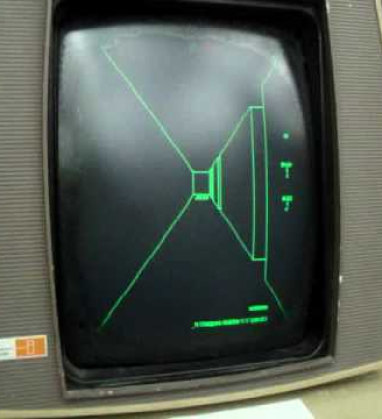
Maze War laid the foundation for a promising idea actively developed and improved over the next twenty years. The genre went through all stages of development, increasing the detail of graphics and ergonomics and making the gameplay more exciting. Finally, in 1991, a real action game Catacomb 3D was released, which, for all its modesty, it contained almost all the elements characteristic of modern games with multi-million dollar budgets. In addition, this game formed the basis of an absolute legend - Wolfenstein 3D. So, in this game, there was everything that gamers wanted then and what they want today: firearms, a courageous and brutal hero, endless corridors of Nazi bunkers, exciting gameplay, and many enemies that the main character has to destroy.
The release of this game became the starting point for the development of all further FPS and action games. Based on Wolfenstein 3D, new games will soon appear that develop the original ideas and implement innovations. There was even a real Christian shooter, where Noah arranged a charitable annihilation of mutant animals right on board his ark.
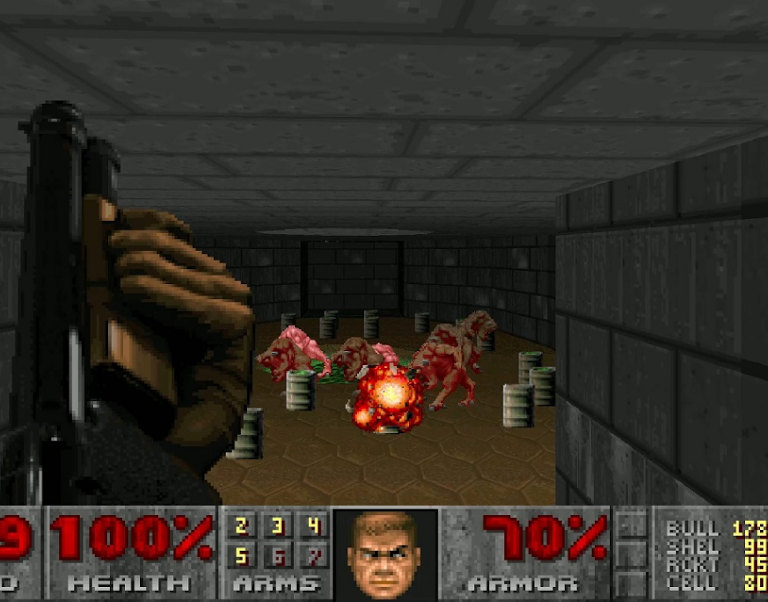
The next significant step in developing games that allow you to participate in the hostilities in the first person was 1993. It was Doom. This name has become a household name and synonymous with FPS. Even today, new iterations of this legendary game remain the standard shooter, competitors are guided by them, and the rules and standards established back in 1993 are primarily relevant today. This year, a competition was released that determined the vector of development of the entire industry for many years to come.
However, the process was already unstoppable. Doom, which has incorporated all the achievements and ideas of the gaming industry over the entire period of its existence, has become a real breakthrough. It was the concentration of everything that the players dreamed of. This game allowed you to unleash your instincts without thinking and have fun shooting demons and monsters, surrounded by advanced graphics that simulate three-dimensional space.
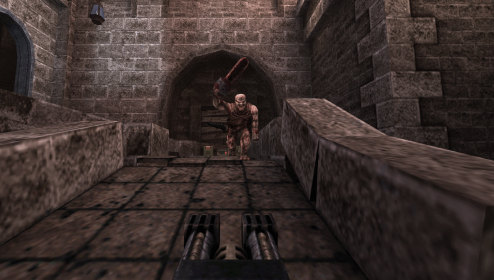
A couple of years later, another legend entered the market - Quake. In terms of technology, it was not even a step forward. It was a rapid leap forward. Stunning, full 3D graphics, whirlwind gameplay, and a great soundtrack from Trent Reznor and Nine Inch Nails. This was already a new word in FPS and took the game one step closer to the real-istic immersion of the player in the events. At the same time, games are becoming so popular that serious businesses are ready to spend big money on them.
One testament to the viability of these business models is the launch of Star Wars shooters that are also hitting the market. At the same time, this is a high-quality product with graphics of the current generation.
But, they do not become a revolution. These are just solid games that do not stand out too much against the backdrop of masterpieces. For example, Duke Nukem 3D was released in 1996 and had such a colossal charisma that it went down in history forever, although it did not have any technological and technical innovations. But, impeccable style and a bold entourage have done their job, and Duke Nukem 3D, even today, brings gamers to nostalgic tears.
All the games discussed above are based on a fantastic story. And this is no coincidence. Firstly, fantasy worlds are much simpler and more exciting to implement. Secondly, the authors and creators do not shackle themselves to the conventions of reality. Indeed, a realistic implementation requires meticulous work and physical models that corre-spond to the real world. For the technologies of those years, this was a real challenge.

The answer to this was the stu-dio of the human meme Gabe Newell and his company, Valve. In 1998, they created one of the pillars of the gaming industry - the reference action movie Half-Life. This is a masterpiece that lives in the hearts of gamers so far. It has not lost relevance over the past twenty years and has grown into a fantastic sequel to Half-Life 2. And the expecta-tion of Half-Life 3 has become a separate discipline for all gamers worldwide, giving rise to millions of jokes, idi-oms, and memes.
Half-Life has made history and earned players' love not only because of the fantastic physical model, cinematic sto-ry, and addictive gameplay. One of the main advantages of the game was its flexibility, which made it possible to create a variety of mods. One of the main, if not the main mods, was Counter-Strike. Today, this multiplayer mod has gone through many improvements and iterations and has grown into a full-fledged digital sport, and has provided a starting point for games that simulate fundamental combat operations and the work of the army and intelligence agencies.
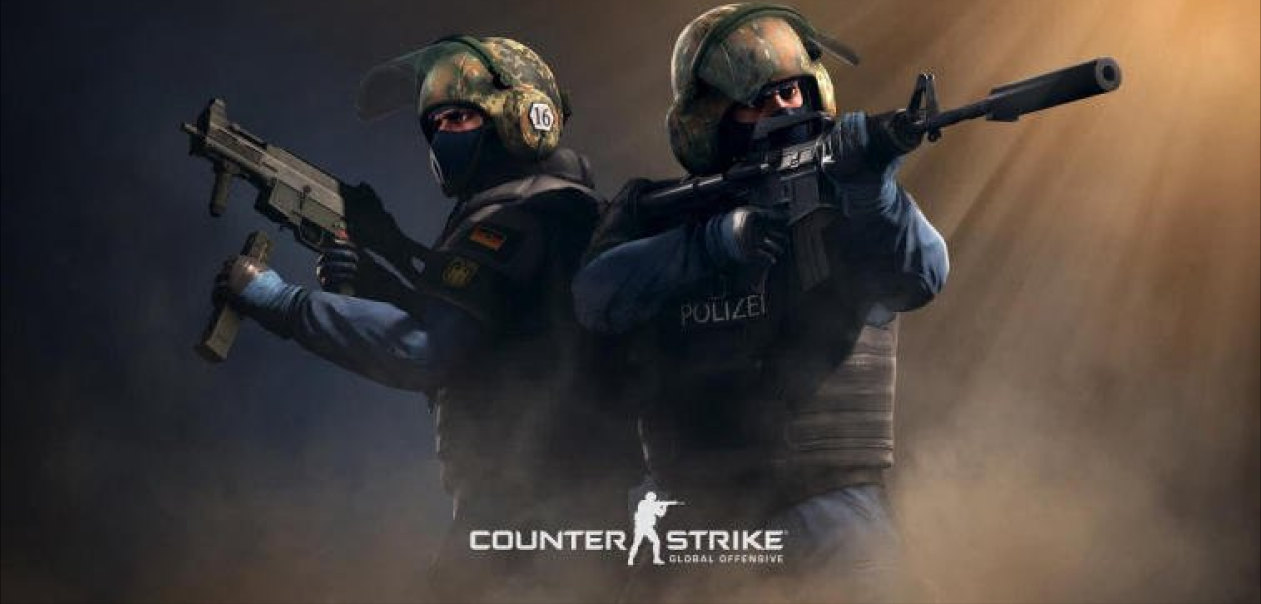
Counter-Strike also solved the problems of the game's story. It simply didn't exist. This not unique but not popular model was implemented gracefully and captivatingly. Two teams, one of which played the role of terrorists, and the second - of special services, fought among themselves on several maps. All this would look as boring as possible if not for one aspect. The game offered a confrontation between living people. This took replay value to a whole new level and opened up new horizons.
The following year, Unreal Tournament and Quake III Arena appeared on the market, offering battles between live players, not bots, albeit in a fantastic setting. Counter-Strike achieved two goals: to popularize multiplayer battles and realistic games in a military environment.
The FPS genre will experience its ups and downs in the future, but it will always remain popular. Characteristic fea-tures of its development will request a realistic display of the gameplay, with actual conflicts and weapons. In the early 2000s, developers and publishers quickly realized this and began to create many such games, both bad and good. We'll show you the highlights of this genre, where you can experience the experience of using night vision goggles and thermal cameras in the virtual world.

And we will begin our story with the game America's Army. It came out in 2002 and is still relevant today. Not be-cause it's good enough to survive twenty years, but because all these twenty years, sequels and spin-offs of Ameri-ca's Army series have been regularly released. At the same time, this video game is not the most technologically ad-vanced, beautiful, or exciting. So what is the reason for the interest? Because it didn't just get its name. This is an official project of the US Department of Defense, a virtual representation of the US Army, and an effective adver-tisement for potential recruits.
Don't underestimate this series. It is made with love by real professionals. At the same time, the gameplay is realistic and reflects many aspects of actual service in the American troops. This, of course, attracts young guys and girls to pay attention to the most powerful and reliable army in the world and allows them to try on the equipment of US sol-diers. The creators of America's Army don't waste public money. They claim that their project reflects reality in a highly realistic way, and you can get a relevant experience by playing this game. The fight against cheaters is an es-sential element of the image of the game, which only adds a competitive component to this severe entertainment.
Many authentic weapon models and equipment have been added over the years, and many releases of America's Army. Night vision devices are among them. But, let's be honest, this is not the option to get the whole experience of virtual night combat. But he deserves to pay attention to him.
In addition, the series of games is part of a whole multiverse that includes comics, mobile entertainment, educational programs, and competitions. It is quite possible that this will captivate you, and you will join our brave guys and girls who protect our borders.
In 1998, a lot of excellent and high-quality games came out. Many went down in history as true masterpieces. Many became unique technological samples; many had a fascinating plot. And, some games have taken a special place in the hearts of the players. One of these games was Delta Force, which is incredibly dear to us personally!
This game went its own way at the time of release—namely, a tactical military shooter. As the name implies, Delta Force invites you to take on the role of a member of an elite US special forces unit. Exciting missions worldwide await you, during which you have to fight terrorists and illegal military formations. It was an enjoyable activity, filled with many familiar weapons and surrounded by the romanticism of military paraphernalia.
In 1998, Delta Force was a unique game. Not only because she brilliantly revealed the unpopular topic of the every-day life of an American soldier. The game was also exceptional from a technological point of view. When the entire industry was pushing for a speedy transition to 3D graphics, the creators of Delta Force went their way using voxel graphics. Time has shown that this technology is not very popular in the industry, but at that time, it was a unique fresh vision that gave players a fantastic experience.
The game was straightforward. In a team of fighters of the elite Delta unit, you went to various troubled parts of the world, where you fought against terrorists. The gameplay was simple and elegant. Real-life weapon models and spe-cific radio conversations create a unique atmosphere. The feeling of immersion was not spoiled even by a particular system for registering bullet hits: you could eliminate the enemy by literally hitting him in the heel. At the time, it all looked like real military porn.

The shortcomings did not spoil the impression too much, especially in the absence of competition among similar games. Therefore, NovaLogic, the creator of Delta Force, continued to create sequels to the successful game. In the second part, all the good ideas were developed, the graphics were improved, and multiplayer for 32 players was add-ed. And Delta Force: Black Hawk Down, released in 2003, was an excellent sequel to the Ridley Scott film of the same name while maintaining the dramatic atmosphere of the original.
Nevertheless, why did we remember this game? All because it was created by people who are well versed in the topic and genuinely love it. In the context of using night vision goggles, Delta Force was perhaps the first game that most adequately and realistically reflected the experience of using night vision goggles in combat conditions. At the same time, you could also get acquainted with the side effects of NV devices, such as flare and graininess. But, at the same time, the immersion was maximum, and the experience was unforgettable. Even today, this game is delightful to play, despite the decades that have passed since the release date.
Since it acquired an ergonomic and compact form, one of the primary consumers of night vision technology has been and remains snipers. We paid a lot of attention to the art of sniping and the intricacies of this mysterious profession. You can read our articles on this topic.
Therefore, it is very intriguing and promising to try on the role of a universal and omnipotent ghost soldier, which is a sniper. This is precisely the opportunity provided by the Polish studio City Interactive, known for the conveyor production of shooters of disgusting quality.

But, Sniper Ghost Warrior is not like everything the developer has done before. This is a kind of Moby Dick of the Polish company Magnus Opus if you like. All games in the series are exciting action-puzzle games in which you will have to become a lone sniper who has to complete combat missions on huge, exciting maps. The variability of the passage is so significant that the replayability of the shooter is one of its main advantages. And the bloody “bullet cam” model, which allows you to see in detail the most spectacular results of a shot, will not leave anyone indiffer-ent.
Regarding the experience of using a night vision device, everything is not so simple. Although it is impossible to imagine a modern sniper without a thermal binocular or night vision scope, not in all parts of the franchise will you be able to use these things? The reason is simple - the main features of the series are concentrated on the period of the Second World War. And, night vision devices during WWII were used only towards completion and were so vast and resource-intensive that there was no question of their use by mobile units or loners.
But as for games that take place in the modern world, such as Sniper Ghost Warrior 2, you can fully enjoy the myste-rious green glow of the night vision device. This brings new impressions to the gameplay and allows you to feel like a real night knight who has access to all the secrets of the night.
The problem of Sniper Ghost Warrior is also relevant for the legendary, odious, and viral Call of Duty game series. The origins of this series lay in 2003, when the very first part came out. It became the conceptual answer to the cin-ematic brand created by one of the most talented demiurges of our time, Steven Spielberg, Medal of Honor. This pro-ject was released in 1999 in the future. Almost all of its parts exploited the theme of the Second World War.
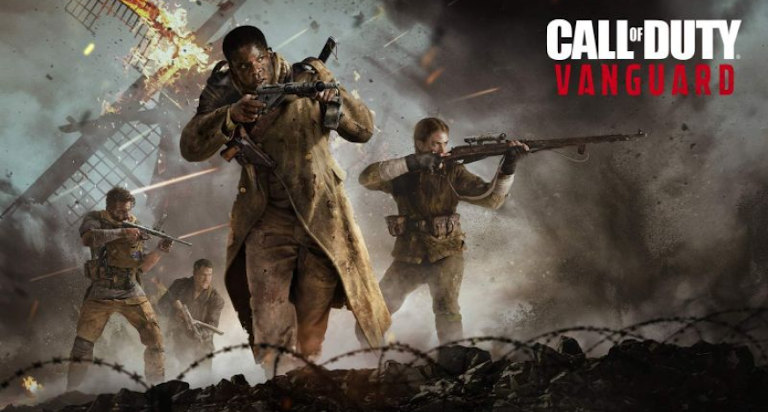
Call of Duty, although it was at the beginning of its journey, was an attempt to create something in the spirit of the famous WWII theme, but it soon turned into something completely different. Thirty-five pieces of the game! Thirty-five! Placed in the Guinness Book of World Records as the best-selling FPS in gaming history. I love and hate play-ers from all over the planet. This is an incomplete list of everything the series can boast of.
Starting as a clone of a successful brand that embraced the history of the twentieth century's most significant con-flict, Call of Duty soon took its twisty path. The geography was as rich as the time frame - where players could not complete missions! It has taken players into space, through the Cold War, and even into the future.

And, yes, those parts of the game overlapped chronologically with the time when night vision technology was active-ly used in the army were correctly implemented in the game's plot. In modern realities, you use an extensive arsenal of weapons and equipment, including thermal imagers and night vision devices, present even in their futuristic de-signs.
In addition, one of the companies responsible for developing this endless series of games, namely Infinity Ward, went down in history as an active popularizer of night vision goggles. At the release of Modern Warfare 2 Prestige Edition, it was they who decided to include real night vision goggles in this package. It is worth noting that this caused a minor scandal and many complaints. For example, a journalist from The Philadelphia Inquirer's compared giving away NV de-vices to every buyer of this version of the game with giving away real cars to all buyers of Forza Horizon or Gran Turismo 7.
It cannot be said that the journalists are right. It's also not to say that the idea behind Infinity Ward was terrific. But, the fact that this marketing campaign has become a fantastic example of uncomplicated creativity and a model of creative promotion is inevitable.
If we mention Call of Duty, we can't help but mention Battlefield. This is an eternal rival and competitor who is con-stantly trying to steal the audience, especially in the multiplayer segment. This continues throughout all 12 parts of Battlefield, not counting the dozens of expansions.
Everything we've said about Call of Duty applies to Battlefield as well. Simply put, they are the same. Of course, technological solutions, multiplayer plots differ. But never mind, both games are classic FPS games with the same pros and cons. Both started out exploiting the theme of World War II, and both tried to master modern scenery. It's the same with night vision devices, which are also well implemented in current iterations of Battlefield.
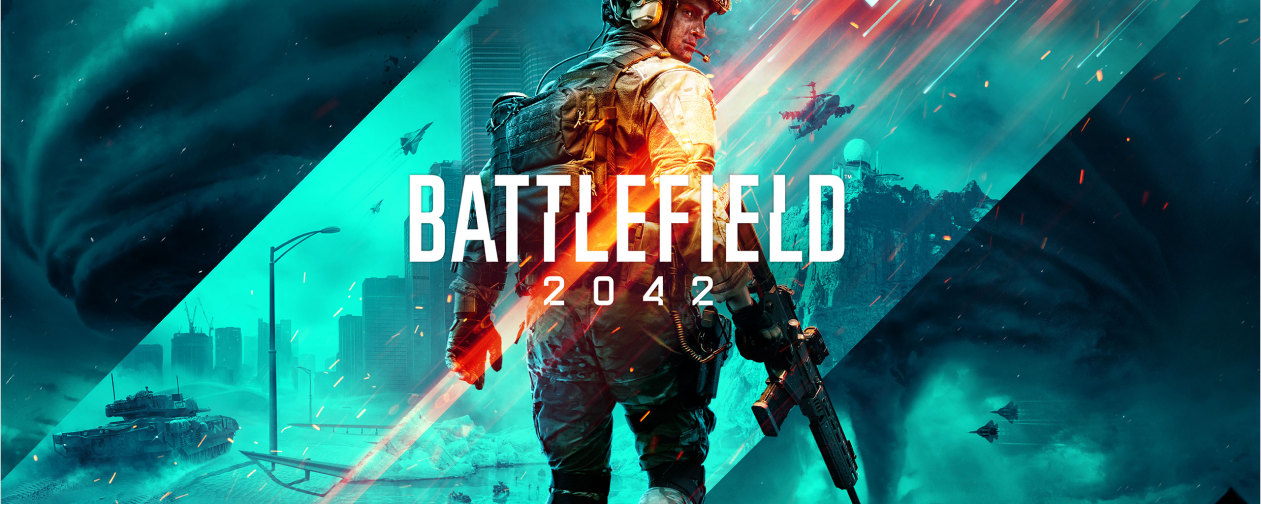
Let's just add that behind the back of this game is an analog of the universal evil from the gaming industry - Elec-tronic Arts. And the hallmark of EA is loot boxes with extraordinary algorithms and irrepressible greed, coupled with the desire to put a minimum of effort into working on their products.
Continuing the theme of futuristic NV devices, we will remember Halo, the system-seller of the X-box set-top box, created by Microsoft in 2001. In this article, we would like to focus on games based on reality and adequately dis-play night vision technology, but we will make some exceptions. One of them is this game. Now we will tell you why it is significant in the context of our article.

Often, books, films, and games are that free zone where you can calmly form any reality and invent any tools. This is a kind of sandbox where you can create absolutely everything without regard to conventions and even a physical model. This is a space for futurists and technology visionaries. Often, scientists and engineers find inspiration and new ideas in this bottomless source.
In the case of Halo, this is exactly what happened. As you know, night vision technology is at its peak right now. The creation of new composite materials and electronic components has led to a significant reduction and improvement of all device nodes. At the same time, the image quality of modern NV devices has reached such a high level that they are now at the IV generation stage. What does it mean?
This means that scientists have developed devices that display the object of observation in color. Clarity and range also reach an incredible level. Even though all this is very expensive today, the path to developing colored night vision has already been passed. And it remains to create new heights.
That pinnacle is the new visualization, which is superbly presented in Halo. This is not just a surveillance area iden-tification system. This is a complete digital computer system, somewhere between what the player sees in Halo and Fallout 4. It shows what is hidden in the dark or snowstorm and offers an intuitive and informative interface that al-lows the fighter to navigate conditions of dynamic combat quickly.
It is hard to believe that we have reached a level of development in twenty years that has been shown as a technolo-gy of the distant future. And there is only one question left: how much were our brilliant scientists inspired by the developers' ideas of Halo?
In 2001, the world of video game lovers received a natural gift in the form of a new genre. And, it is as a new genre that we perceive Operation Flashpoint and ArmA. Even though visually, they represent a classic FPS, the gameplay plot tells us that these are games of a completely different genre, and your skills gained in other projects will be use-less here. For the reason that this is a military tactical simulator.

Bohemia Interactive, the creator of these projects, has created a game that conveys the feeling and experience of actual large-scale military operations as authentically as possible. It can seem meticulous, even dull, for the average player. The cards presented in it are giant, and the options for being killed are incalculable. Everything is like in a real war. This is precisely the creators' goal when developing
Operation Flashpoint and its successor ArmA.
This is a niche product. The game is complex, as realistic as possible. It takes immersion in the military environment to a completely different level. That is why the game community is very narrow and specific, and the threshold for entering the game is very high.
We believe that ArmA and Operation Flashpoint is one of the best night vision display and thermal imager models. It is useless to talk about it in words - we strongly advise you to try it yourself or watch the gameplay video on YouTube. The realism and authentic implementation of ideas are not limited to weapons, equipment, and physics. Even IR-light in the game behaves as closely as possible to how it is perceived in life. The same can be said about night-vision effects. Highlights, draw distance, darkening - the immersion is incredible.
If we are talking about the invention of new genres within FPS, it would be wrong and even criminal, not to mention hunting simulators. This is such a specific genre that many wonder why they exist.
If you can firmly say about all the previous games: they exist so that everyone can try on the role of a soldier and feel for themselves what war is. At the same time, hunting is an activity available to everyone. So that everyone can make their wars, feel the horror of hostilities, and admire the courage of our fighters.
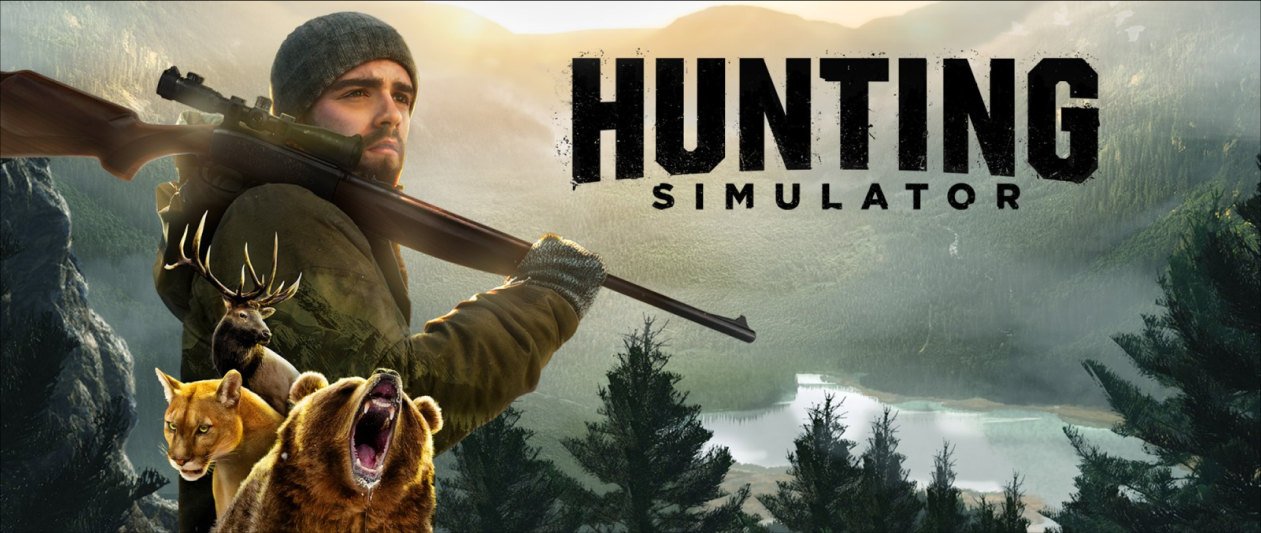
Of course, not everyone wants to kill animals and walk long miles through forests and fields. But, usually, such peo-ple are entirely indifferent to this whole subculture.
But, as it turned out, this is not so. It turned out that many people do not want to choose the best boots for hunting, best car for hunting, or best backpack for hunting. And most importantly, some people are not ready to pay money for equipment and even for the cheapest night vision device, without which it is simply impossible to imagine a modern raid. For such people, simulators have been created that become more realistic every year.
The industry offers many brands that will take you to the most remote corners of the planet and allow you to track down different types of animals. It's hard to believe, but there are even more such games than soccer simulators, of which there are only two - FIFA 22 and Pro evolution soccer. In the hunting simulator industry, the competition is much more challenging: Cabela's series, Big Buck Hunter, Deer Hunter (series), Duck Hunt, The Hunter Redneck Deer Huntin', Rocky Mountain Trophy Hunter, Ultimate Duck Hunting, Hunting Unlimited, and even dinosaur hunt-ing simulator - Carnivores.
All these games, to varying degrees, fulfill their main task - to convey the feeling of an actual raid. The identity of impressions in them is elevated to a priority. This also applies to thermal imagers and night vision devices, without which it isn't easy to imagine a modern hunter. And this practice is so exciting and realistic, especially in such lead-ers of the genre as Deer Hunter and Hunting Unlimited, that it will be helpful even for people with great experience and experience. Those who have never tracked a deer in the wilderness, thanks to such games, can selflessly fall in love with the art of hunting and, in the future, transfer their experience from the virtual to the real world.
Night vision goggles, thermal scope, NV monocular, thermal binocular - without these devices, it isn't easy to imag-ine any particular modern unit. Such devices expand fighters' capabilities so much that everyone uses them. In turn, military simulators one of their tasks indicate a complete, authentic transfer of military experience and careful copy-ing of both equipment and weapons and tactics of special services. Moreover, every day, technology penetrates deeper into the civilian sphere. Therefore, it is not surprising that in the military sphere, they are used everywhere.

Therefore, fans of night vision can safely advise any military simulator because, in each of them, you will find the opportunity to use a digital model of the NV device. On the other hand, if you want your experience to be positive and authentic, you must carefully choose which games to play.
Tom Clancy's Rainbow Six series is one example we can safely recommend to everyone. The history of the tactical shooter franchise began in 1998. From the very beginning, the games in the series were positioned as hardcore strat-egy shooters. You had to study the location, plan the operation, think through minor details, and bring your plans to life with the help of a rich arsenal of fighters. It was a complex and exciting process with a high entry threshold. Still, those who did not spare their nerves and time got a lot of pleasure from the game, including the use of night vision devices in the game, which the developers intelligently integrated.
Today, the market does not have the former demand for brilliant tactical games; therefore, the focus of developers has shifted towards more casual gameplay paradigms. Now the famous series lives on in its new iteration of a session shooter, a very good one, called Tom Clancy's Rainbow Six Siege.
As we said, we don't want to limit ourselves to talking about FPS only, as the history of the gaming industry knows excellent examples of third-person games that offer an incredible experience with night vision goggles. The most crucial such game is the Splinter Cell series.

Yes, there was a time when Ubisoft made high-quality games, and not the same type of series, as now, like Far Cry, Assassins Creed, The Crew. Strictly speaking, the game we want to talk about is Tom Clancy's Splinter Cell, which indicates that the master of spy thrillers with many stamps Tom Clancy had a hand in its scenario. So don't expect much from the story.
But what you need to look forward to is excellent, addictive, exciting, and original gameplay. This game, embodied in the original part and its sequels with add-ons Splinter Cell: Pandora Tomorrow, Tom Clancy's Splinter Cell: Chaos Theory, Tom Clancy's Splinter Cell: Essentials, Tom Clancy's Splinter Cell: Double Agent, Tom Clancy's Splinter Cell: Conviction, Tom Clancy's Splinter Cell: Blacklist is the best fit for today's topic. Unless except for the last two parts, where the authors slightly changed their focus.
This masterpiece of the gaming industry invites us to reincarnate as an agent of a secret organization, Sam Fisher, who alone saves the world and destroys the bad guys. Not original, you will say, and you will be correct. The origi-nality lies in the way Sam does it. And he does it secretly, from the shadows and darkness.
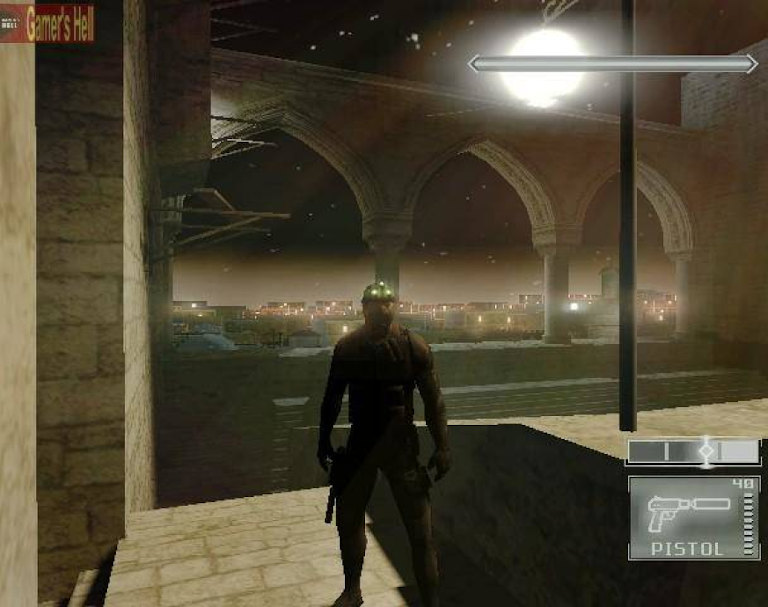
The protagonist entered modern pop culture in his black suit and night vision goggles (which, for some reason, glow with three bright green lights, don't ask why). Therefore, even looking at the appearance of our alter ego, one can understand what the game is about. It's about hiding in the shadows, killing in the dark, and hiding within an inch of the enemy. The way Ubisoft has implemented night vision and the very nature of shadows and darkness is mesmeriz-ing. The way they implemented gameplay based on these factors is simply amazing. Being a secret agent with the most modern equipment, Sam Fisher has a full range of night vision devices and thermal imagers. At the same time, the image is very realistic and organically immerses the player in the appropriate environment.
During the game, you have to use the elements of the environment, which are designed so that the passage is built on stealth mechanics. Of course, you can try on the role of Rambo and annihilate all the enemies, but it will be much more complex than using shadows and darkness in combination with an abundance of night vision devices. This is the quintessential use of night vision in video games, and it's safe to say that the entire Tom Clancy's Splinter Cell series is an ode to this incredible technology.
Of course, many accuse the game of being secondary, referring to the similarity with the Metal Gear Solid series. And in general, many point to the likeness of Sam Fisher to Solid Snake. In addition, the gameplay and the use of night vision and stealth approach hint at similarities. But, thanks to the charisma of the heroes and the thoughtful-ness of the details of each game, both of them are included in the golden fund of the gaming industry.
But, be that as it may, Splinter Cell will forever remain in our hearts as a fantastic game that can captivate the game-play for a long time and which, better than any other game, shows all the possibilities of night vision technology.
You can talk about it for hours when you touch on an exciting topic. And when such fascinating topics as night vi-sion technology and video games are combined in one article, the conversation will take many hours. In an attempt to limit ourselves, we touched on the top players in the gaming industry who will bring you the best NV and thermal device experience.
We hope that with our help, you will enjoy the game and gain an authentic understanding of how the system works, allowing us to see all the details hidden by darkness. Where will these discoveries lead you? - a good question. But, we are sure that many amazing discoveries and incredible impressions await you ahead.
Table of contents